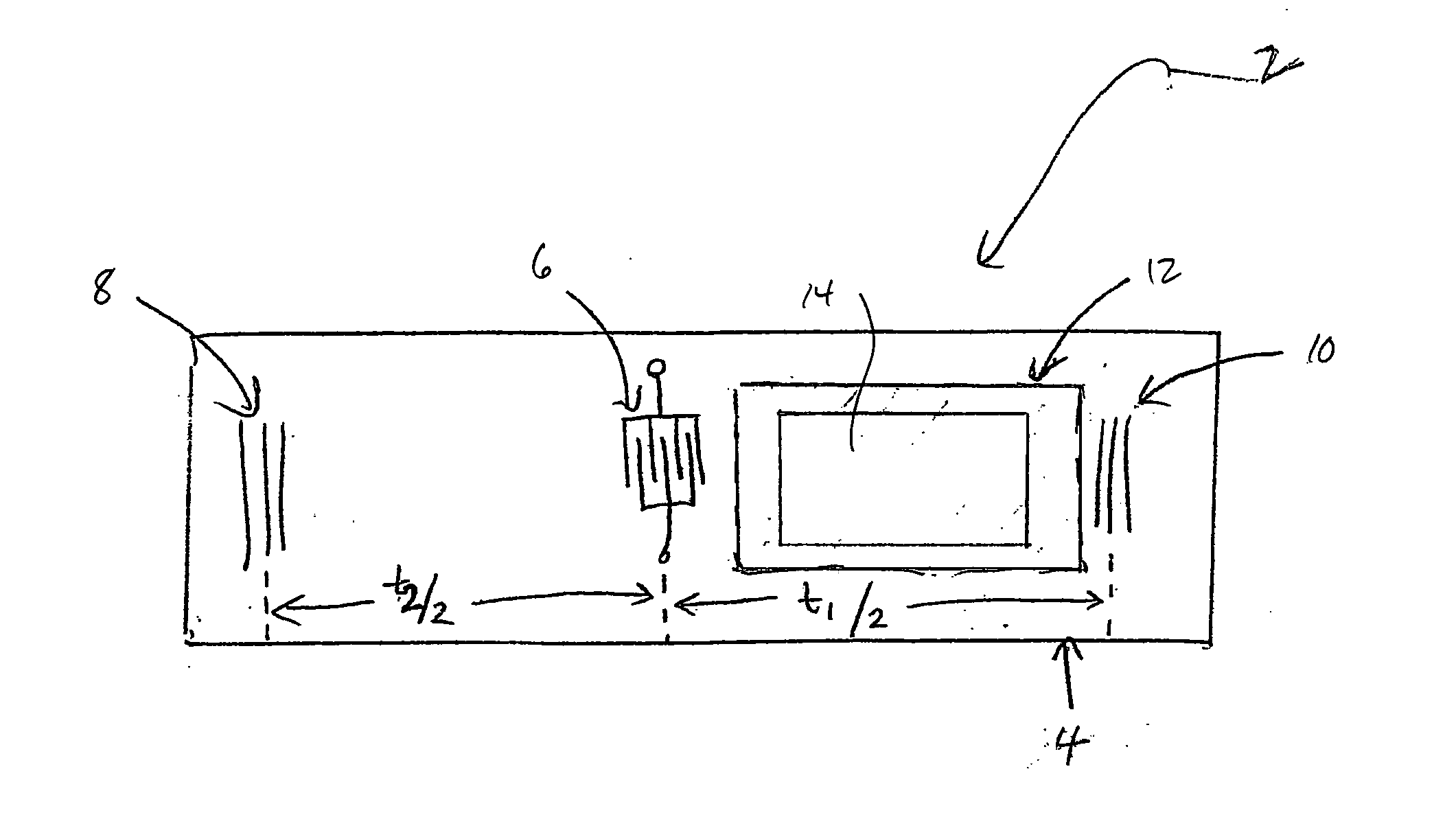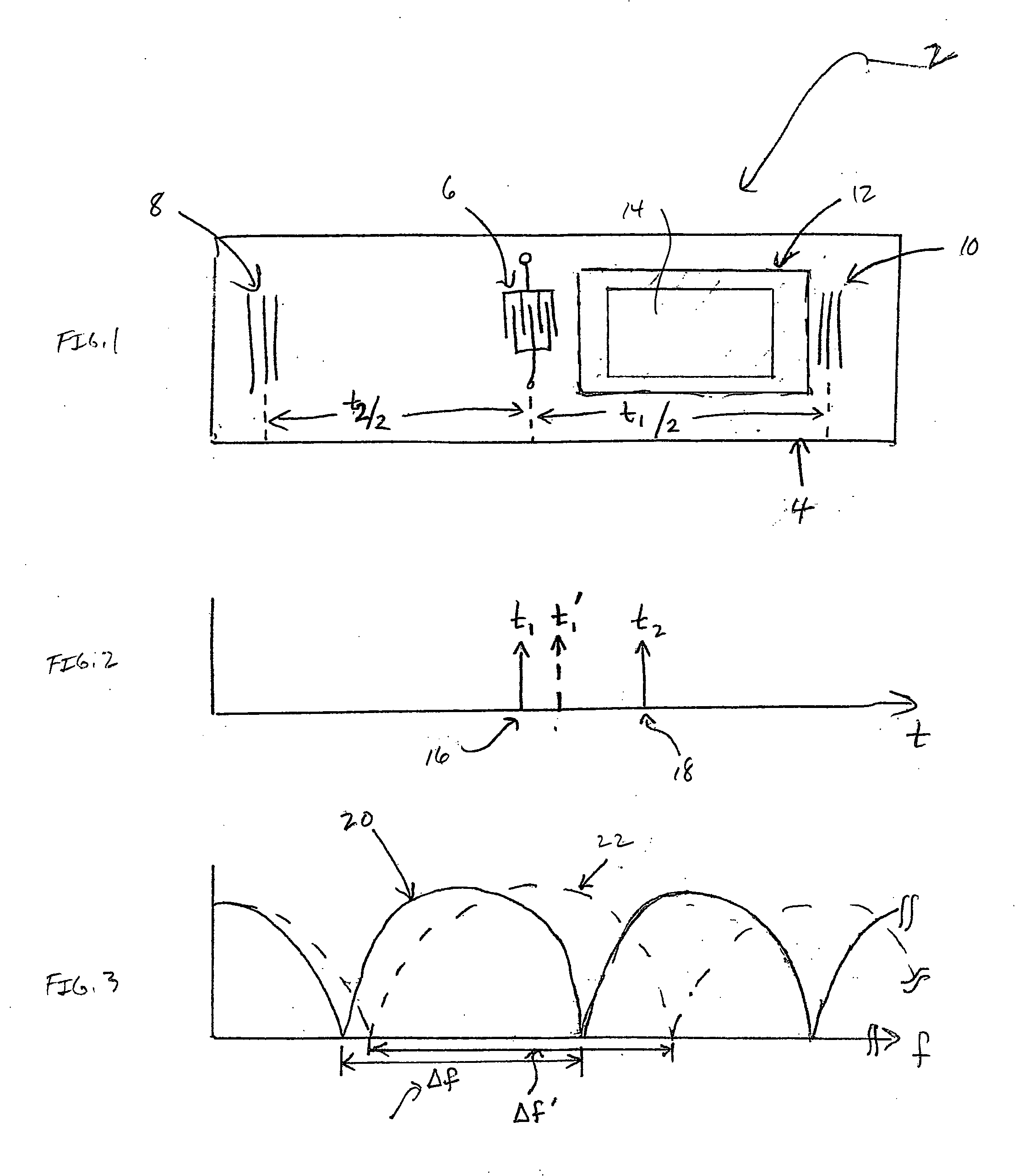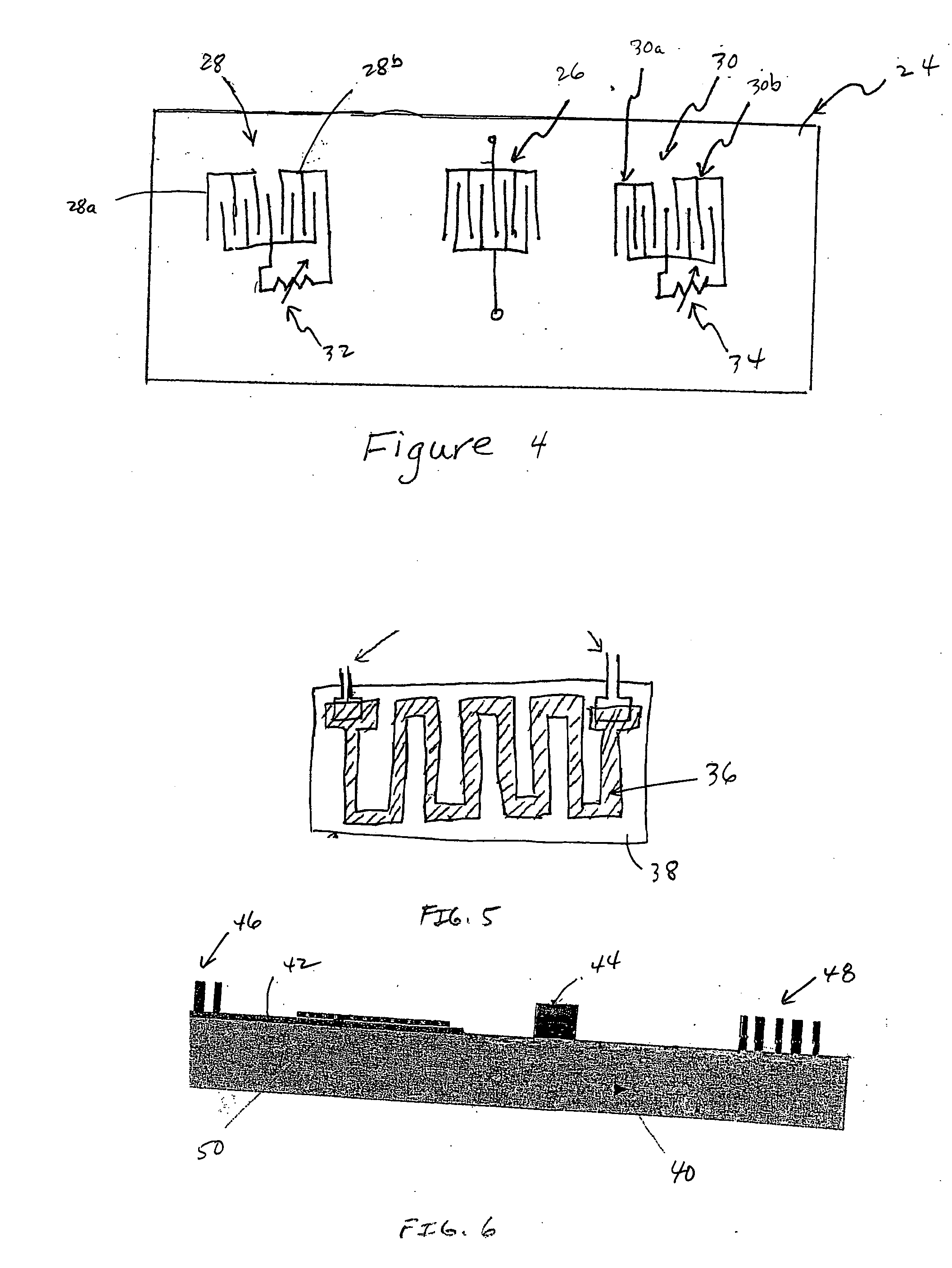Passive SAW-based hydrogen sensor and system
a saw-based hydrogen sensor and sensor technology, applied in the direction of positive temperature coefficient thermistors, instruments, specific gravity measurements, etc., can solve the problems of palladium nanoclusters swelling and harder wet palladium surfaces, and achieve small separation distances, stable, stable, and stable at room temperature.
- Summary
- Abstract
- Description
- Claims
- Application Information
AI Technical Summary
Benefits of technology
Problems solved by technology
Method used
Image
Examples
second embodiment
[0036] the current invention utilizes resistive elements formed from the palladium nanocluster films to control the performance of the SAW device in such a way as to vary the device response with exposure to hydrogen. Such an embodiment will now be described with reference to FIG. 4. A piezoelectric substrate 24 has an input transducer 26 and two reflective structures 28 and 30 formed on a surface thereof. Each reflective structure is subdivided into separate portions 28a, 28b and 30a, 30b. A variable resistance element 32, 34 is connected with each reflective structure. An example of a variable resistance element is shown in FIG. 5. Each variable resistance element is formed from a palladium nanocluster film 36 formed in a pattern on a siloxane SAM 38. The SAW device of FIG. 4 utilizes regeneration reflections and thus uses split finger electrodes. Without hydrogen present or with hydrogen present at low background levels, the reflectors 28, 30 each have a predetermined center of r...
first embodiment
[0044] an interrogator circuit for detection of lobe shift using a time integrating correlator is shown in FIG. 8. A wide band noise source 60 supplies an output voltage signal. This signal is amplified by an amplifier 62 and supplied to an antenna 64 for transmission. The transmitted signal is received by a target or sensor and reflected back to the antenna 64. The amplifier 62 blocks the returned signal from going back to noise source 60, but the return signal is applied to one of the input ports of a multiplier 68. While passing from the noise source 60 to the antenna 64, propagating to the target, and returning to the antenna, the signal experiences a delay T. The signal reflected from the target and delivered to the right side input of the multiplier is the interrogation signal I.
[0045] The same noise signal which is the source of the interrogation signal is delivered to a delay line 70 where it is delayed. The delayed signal, which is a reference signal R, is applied to the ot...
PUM
| Property | Measurement | Unit |
|---|---|---|
| temperatures | aaaaa | aaaaa |
| temperatures | aaaaa | aaaaa |
| frequency | aaaaa | aaaaa |
Abstract
Description
Claims
Application Information
 Login to View More
Login to View More - R&D
- Intellectual Property
- Life Sciences
- Materials
- Tech Scout
- Unparalleled Data Quality
- Higher Quality Content
- 60% Fewer Hallucinations
Browse by: Latest US Patents, China's latest patents, Technical Efficacy Thesaurus, Application Domain, Technology Topic, Popular Technical Reports.
© 2025 PatSnap. All rights reserved.Legal|Privacy policy|Modern Slavery Act Transparency Statement|Sitemap|About US| Contact US: help@patsnap.com



